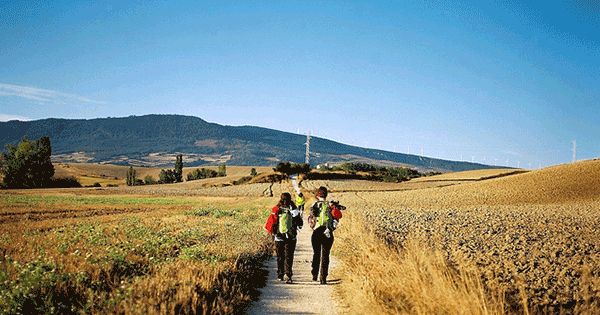
For the next several weeks, we will republish our favorite “Teaching Lessons” columns from this year.
With all the swagger, coltish moves, and innocent stumbling on a college campus, you mostly wait patiently until your 20-somethings hit their stride. I literally teach students to walk—not in a physiological sense but in a therapeutic one. Each year, I lead them on pilgrimage treks on the Camino de Santiago in Spain, and together we hike anywhere from 75 to 500 miles along the ancient routes to the shrine of St. James the Apostle.
It might sound like bragging, but at three times their age, I can usually walk their butts off, but almost anyone my age could. We know our bodies from the inside, how to pace ourselves, when to quit. When you’re 20, you do everything until you crash. That’s how we learned our limits, too, back when. For college students, their adult body is a recent acquisition and they haven’t read the owner’s manual yet. Their over-energetic striving and headlong stumbles are age appropriate. We would never want to deprive young people of their chance to make plenty of them, safely.
A pilgrimage walk is an eager flirtation with your body that helps you also take ownership of your mind, too. We faculty designed this unique study abroad venture as an interdisciplinary lab experience for students of art history, sociology, linguistics, and even dance movement, and the data they collect while on the road is rich. A colleague in biology used to say that if you don’t collect the data, you don’t deserve to interpret it. Studying while walking gives that sense of legitimate possession of the evidence and a certain humility before it, since we see how spotty and unreliable our data gathering gets when we’re exhausted, exhilarated, or just dopily distracted. Thinking modestly from inside one’s body is a worthy goal of pilgrimage.

